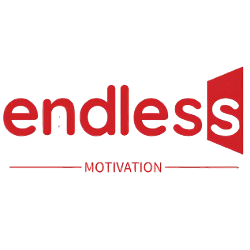Do you check your phone within 5 minutes of waking up? Spend 3+ hours daily on social media? Feel anxious when away from screens? You’re not alone—the average person touches their phone 2,617 times a day (Dscout Research).
A digital detox isn’t about quitting tech forever—it’s about resetting your brain’s dependency on dopamine-driven scrolling. These 7 detox challenges, backed by neuroscience and behavioral studies, will help you reduce screen time, boost productivity, and improve sleep without extreme measures.
Why Digital Detox? The Shocking Stats
- ⏳ 5.4 hours/day: Average screen time for adults (Statista).
- 🧠 43% lower focus: Heavy social media users struggle with deep work (Microsoft Study).
- 😴 2x insomnia risk: Blue light suppresses melatonin (Harvard Sleep Medicine).
7 Digital Detox Challenges (Start Small or Go All-In)
Challenge 1: The “No-Phone Morning” Rule
🚀 Goal: Avoid screens for the first 30-60 minutes after waking.
🧠 Science: Morning screen exposure spikes cortisol (stress hormone) by 27% (UC Irvine Study).
✅ How:
- Charge phone outside your bedroom.
- Replace scrolling with:
- ☀️ 5-minute sunlight exposure (regulates circadian rhythm)
- 📖 Reading 3 pages of a book
- ✍️ Journaling
Challenge 2: The “20-20-20” Work Break
🚀 Goal: For every 20 minutes of screen work, take 20 seconds to stare at something 20 feet away.
🧠 Science: Reduces digital eye strain (American Optometric Association).
✅ Pro Tip: Set a Pomodoro timer with 20-minute focus sprints.
Challenge 3: The “After 8 PM Lockdown”
🚀 Goal: No screens 1-2 hours before bed.
🧠 Science: Blue light delays melatonin release by 3 hours (Sleep Foundation).
✅ Alternatives:
- 🎧 Audiobooks/podcasts
- 🧘♂️ Stretching or meditation
- 🗣️ Real-life conversations (shocking, right?)
Challenge 4: The “Social Media Safari”
🚀 Goal: Limit social media to 10 minutes per app/day.
🧠 Science: 30+ minutes/day on Instagram increases depression risk by 37% (University of Pennsylvania).
✅ How:
- Use Screen Time (iOS) or Digital Wellbeing (Android) to set hard limits.
- Delete apps temporarily (try 1-week app fasting).
Challenge 5: The “Single-Tasking Saturday”
🚀 Goal: One screen at a time (no multitasking) for a full day.
🧠 Science: Multitasking drops IQ by 15 points (University of London).
✅ Try:
- 📵 Phone in another room during meals/work.
- 🖥️ Close all browser tabs except one.
Challenge 6: The “Notification Purge”
🚀 Goal: Turn off all non-essential notifications.
🧠 Science: Notifications create phantom vibration syndrome (false alerts) in 89% of people (MIT Study).
✅ Keep Only:
- Calls from favorites
- Calendar reminders
- Nothing else.
Challenge 7: The “Analog Weekend”
🚀 Goal: 24 hours without screens (emergencies exempt).
🧠 Science: Just 1 screen-free day boosts creativity by 41% (University of Texas).
✅ Survival Kit:
- 📚 Physical books/magazines
- 🎨 Sketching or puzzles
- 🌳 Nature walks
Why Most Digital Detoxes Fail (And How to Succeed)
❌ Mistake 1: Going cold turkey → relapse within days.
✅ Fix: Start with one challenge (e.g., no-phone mornings).
❌ Mistake 2: Not replacing screen time → boredom = failure.
✅ Fix: Swap scrolling with pre-planned activities (reading, cooking, gym).
❌ Mistake 3: Ignoring dopamine withdrawal symptoms (restlessness, FOMO).
✅ Fix: Accept discomfort—it fades in 3-5 days (neuroplasticity at work).
Bonus: Track Your Progress
Use these free tools:
- 📊 Screen Time (iOS) / Digital Wellbeing (Android)
- 📝 Analog journaling (note energy/focus changes)
Final Thought: Digital Minimalism > Digital Detox
A detox is temporary—digital minimalism is lifelong. Ask:
- Does this tech serve me?
- What would I do with an extra 10 hours/week?
Your Turn: Which challenge will you try first? Comment below!

